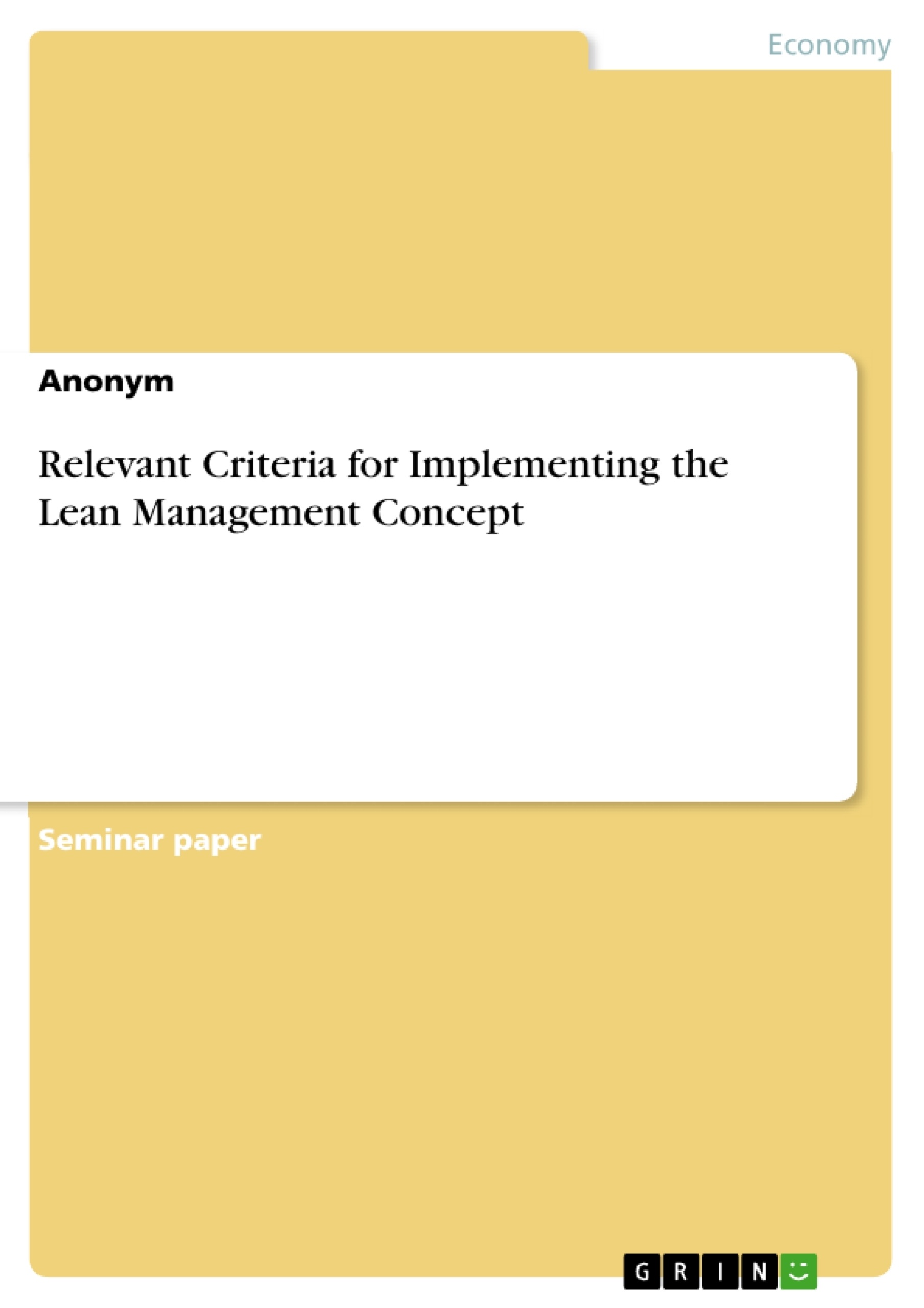The initial situation of organizations is still shaped by rapidly changing environmental conditions. Unstable terms are caused by the globalisation, intensified market and competitive conditions, changing customer requirements and structures as well as new technologies and interconnected processes. Therefore, a lot of enterprises launched the Lean Management concept to optimize the efficiency of value-adding processes and the competitive position in times of change. Thereby, waste in form of, for instance, human activity which absorbs resources but creates no value such as mistakes that require rework or products that have not been sold and so tower up inventories influences the efficiency of the value chain negatively and, thus, should be avoided. The realization of a process and customer orientation while illustrating a lean structure and lean processes has become a challenge for every company (Womack & Jones, 2013).
The elaboration constitutes an overview of relevant criteria for implementing the Lean Management concept. At first, a definition clarifies the meaning of Lean Management whereby the main part illustrates lean principles and methods as well as implementation barriers which should be taken into consideration by implementing the Lean Management philosophy. Finally, a conclusion will summarize the findings.
Inhaltsverzeichnis (Table of Contents)
- Introduction
- Definition
- Lean Management
- Principles and methods of Lean Management
- Implementation barriers of Lean Management
- Conclusion
Zielsetzung und Themenschwerpunkte (Objectives and Key Themes)
This paper aims to provide a comprehensive overview of the relevant criteria for implementing the Lean Management concept. It will explore the definition of Lean Management, its core principles and methods, and the implementation barriers that must be considered. The paper will conclude with a summary of the findings.
- Definition and origin of Lean Management
- Core principles and methods of Lean Management
- Implementation barriers of Lean Management
- The importance of customer and quality focus
- The role of human resources in Lean Management
Zusammenfassung der Kapitel (Chapter Summaries)
The introduction sets the stage by discussing the need for Lean Management in today's rapidly changing business environment. It highlights the importance of eliminating waste and optimizing value-adding processes. The definition chapter clarifies the meaning of Lean Management, tracing its origins to the Japanese automotive industry and the Toyota Production System (TPS). This chapter explains the core principles of Lean Management and its focus on efficiency, customer orientation, and cost reduction.
The chapter on Lean Management delves into the principles and methods that drive the concept. It outlines the five core principles of Lean Thinking and explains various analysis methods used to identify inefficiencies and potentials. This chapter also highlights the importance of continuous improvement, standardization, and employee involvement.
Schlüsselwörter (Keywords)
Lean Management, Lean Production, Toyota Production System (TPS), Value Stream, Waste Reduction, Efficiency, Customer Focus, Quality, Cost Reduction, Implementation Barriers, Human Resources, Continuous Improvement, Standardization.
- Quote paper
- Anonym (Author), 2015, Relevant Criteria for Implementing the Lean Management Concept, Munich, GRIN Verlag, https://www.grin.com/document/299016



